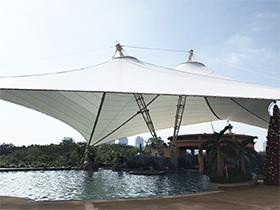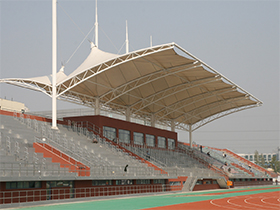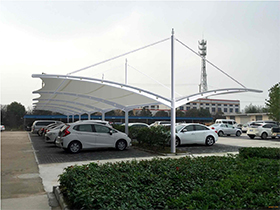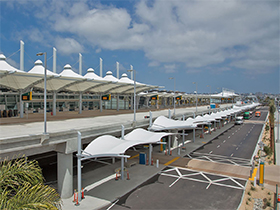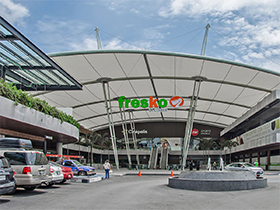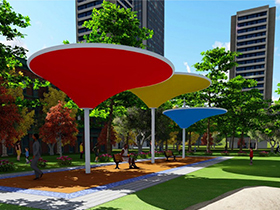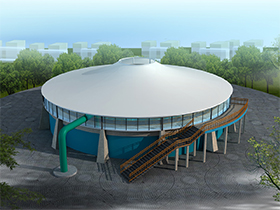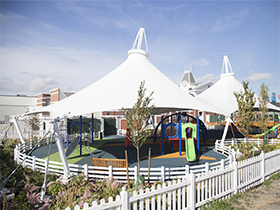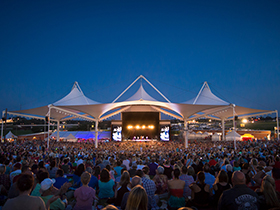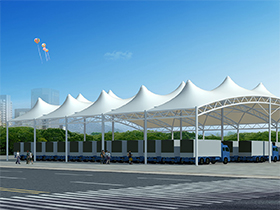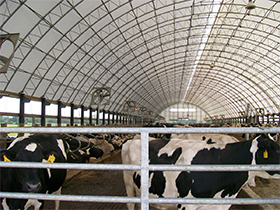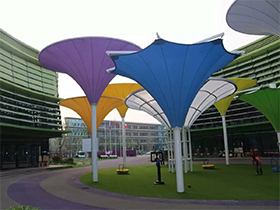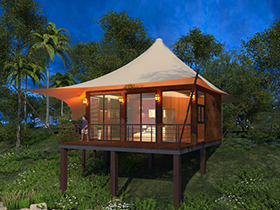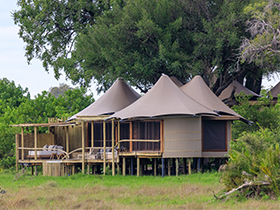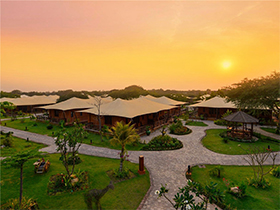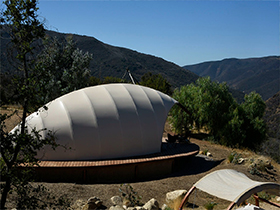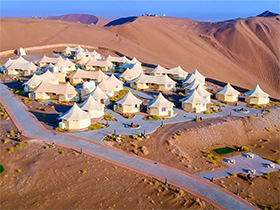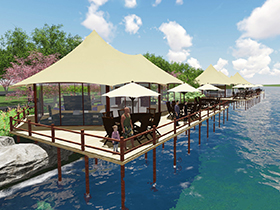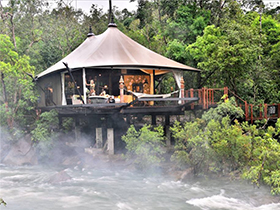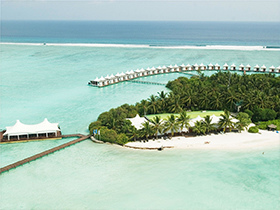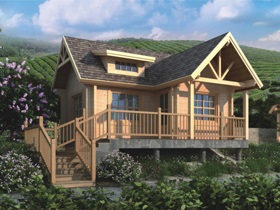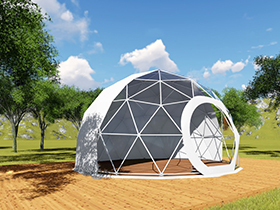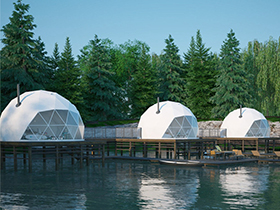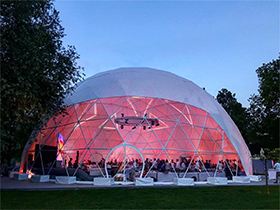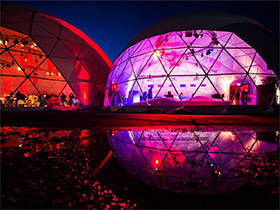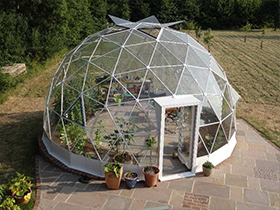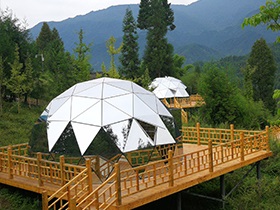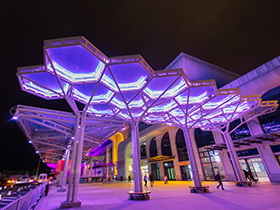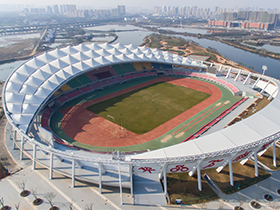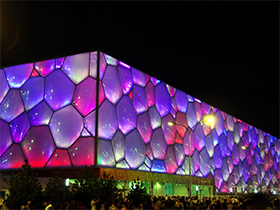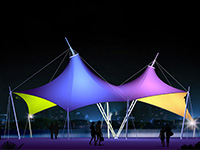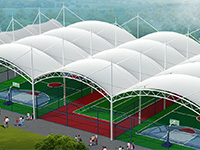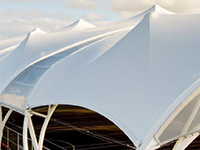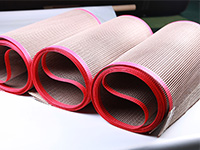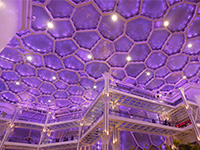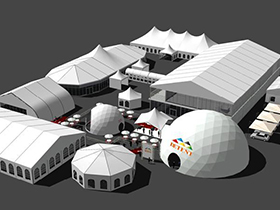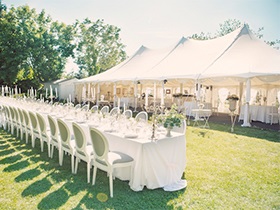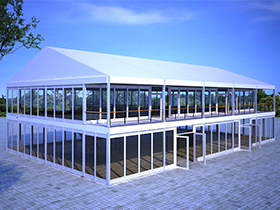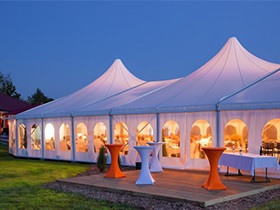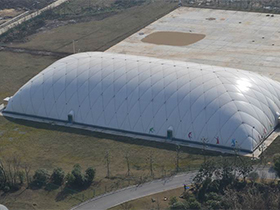How to Customize Your Own Glamping Tent
July 29,2022
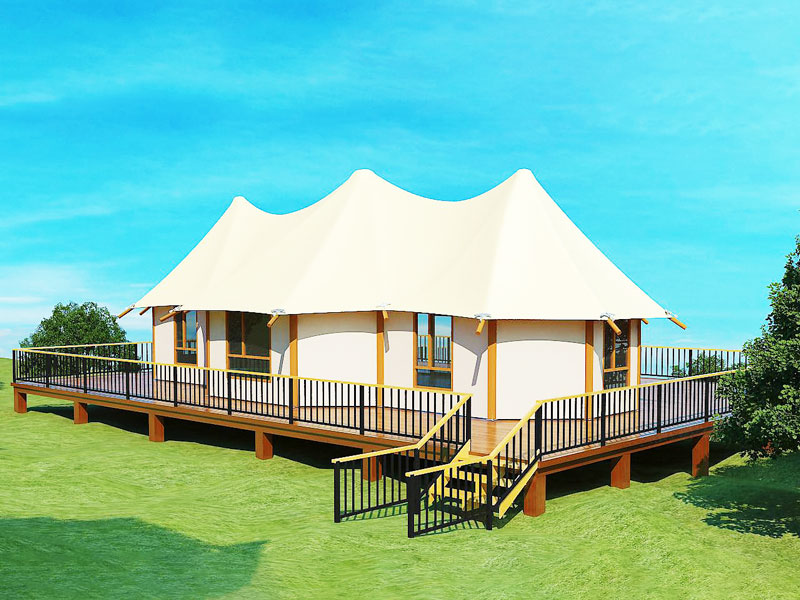
Glamping tents are available in a variety of styles, perfect for your next family vacation. Choose from beautiful, custom-designed tents or demos. Many luxury tents feature an on-site spa, full 5' sidewalls and steel D-rings at the eaves. Having 6+ foot sidewalls gives you more headroom and usable tent space.
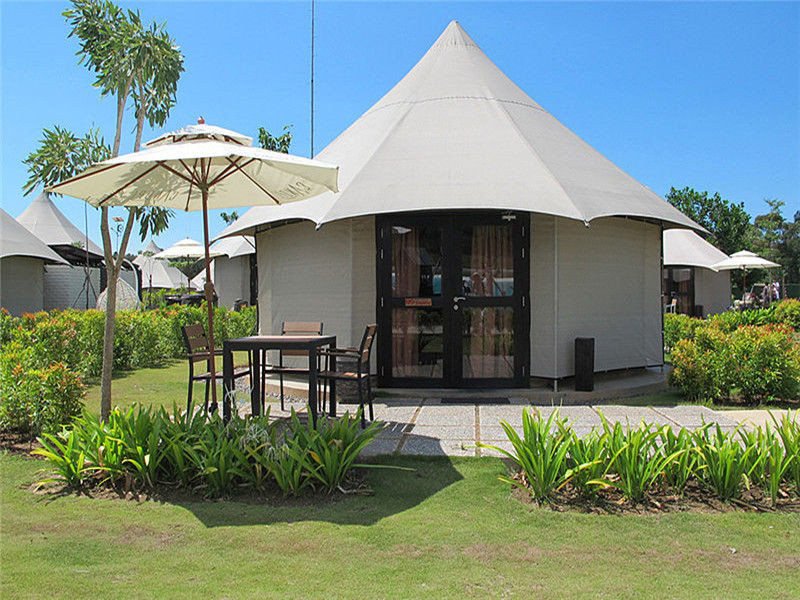
Glamping, also known as glamping, is a great way to escape our busy lives. Glamping is the perfect place to get away from technology and enjoy nature, fresh air and absolute relaxation. Whether you prefer glamping with comfy beds, a unique style tent, or something completely off the beaten track, glamping offers the perfect experience. Luxury canvas camping tents can be purchased online or by finding a local dealer in your area. Choose from a variety of styles and sizes to find the perfect glamping tent for your family. Depending on size and style, you can choose from standard tents with single or double beds, or large luxury tents with three bedrooms. Multiple people can also stay in tent resorts together.
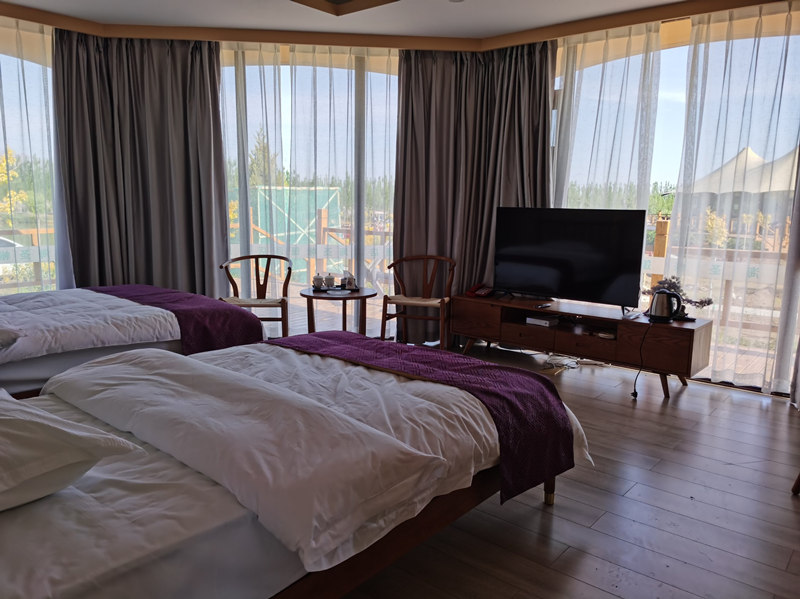
Luxury tents can be customized to suit your family's needs. Some are designed to accommodate up to 20 people, making them ideal for larger groups. Custom designed models feature standing height ceilings and lots of floor space. Some even have integrated mesh windows. This means that no two people will have to crowd. With so many options, finding the perfect glamping tent isn't difficult. If you think the cost is too high, you can also idle time and tents for sale. It is also a way to get money back. Tent rental prices vary by the degree of luxury tent you customize
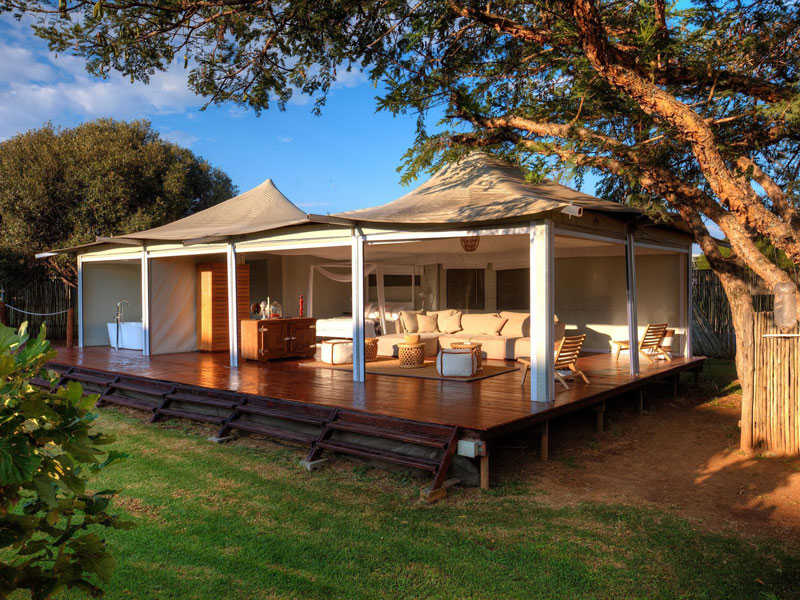
Camping tents are an elegant way to spend an unforgettable vacation. These accommodations feature modern conveniences and can be equipped with Wi-Fi, air conditioning, custom decks and flush toilets. If you want something stylish and practical for the whole family, consider buying a dome-shaped glamping tent. A luxury tent will be your best value for money. If you have an for a camping tent ideas, choose BDIR.
Tensile Structure Uses and Advantages
July 27,2022
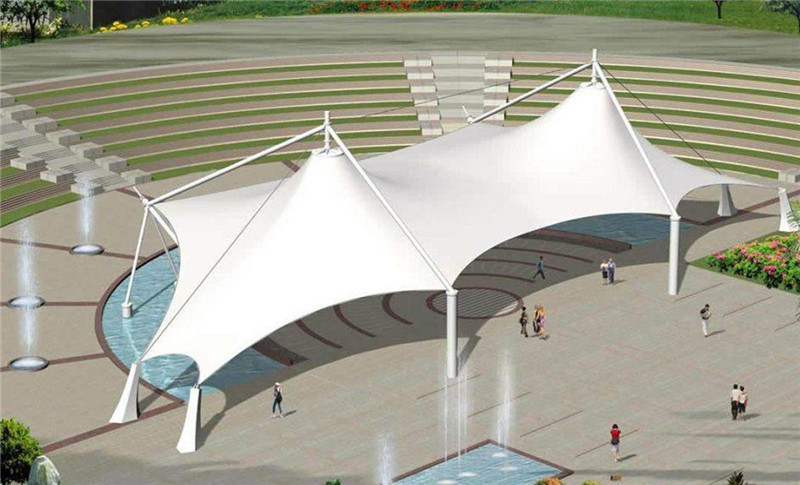
A tensile structure is a lightweight fabric structure that carries loads by utilizing tension. Stretch Structures Fabric Structures describe various stretch film structures and the current state of knowledge. Tensile fabric structures are commonly used in transportation facilities, buildings, and other applications that require a high degree of sustainability and aesthetics. They can also be used as a lightweight alternative to steel frames, such as skyscrapers, playground shade structures, garden shade structure, etc.
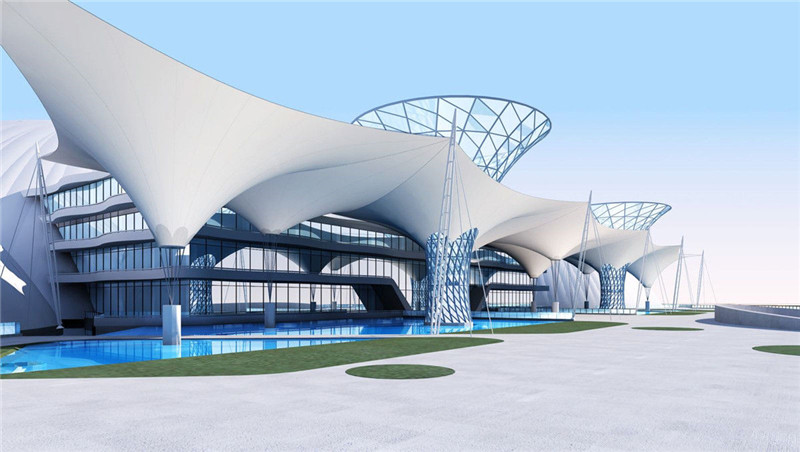
The design of tensile structures can vary depending on the needs of a specific project. They are often used to provide shade or shade to buildings. The beauty of tensile structures makes them an attractive option for many types of facilities. They also offer a unique combination of reliable functionality and aesthetic appeal. These benefits make them very popular structural systems. Some examples of tensile structures are listed below.Tensile structures can be designed with large or small areas. It can cover large spaces such as event venues, stadiums, performance venues or military structures. Smaller examples include outdoor restaurants, rooftop bars, tension shade sails, and more. Tensile construction is an excellent choice for outdoor applications because it gives an outdoor feel and is weather resistant.Due to its unique membrane tension properties, the tensile fabric structure has a uniquely elegant form. Its translucency also provides soft, diffused natural light. Artificial lighting can also be used to generate external lighting. Tensile structures can be used to create prefabricated modular buildings or as lightweight elements of existing structures. They are one of the most cost-effective options on the market. When properly designed and constructed, tensile fabric structures can be very durable.
.jpg)
German architect Frei Otto was a seminal figure in the development of tensile architecture. Frei Otto's pioneering work demonstrates that the relationship between architectural and structural form is intimate and mutually beneficial. Frei Otto's monumental tensile building, the Hangende Dach in Munich, won the 2015 Pritzker Architecture Prize. It redefines structures and prefabricated systems and shows that they are compatible with sustainable design.Stretch fabrics are typically combinations of fibers used in various applications. Tensile structure details have many advantages, including the ability to minimize the surface area between the dots. Plus, it's very efficient and maximizes the use of expensive, high-strength fibers. And because it's light, it's also durable. If you are looking for tensile structures for your project, please contact us today!
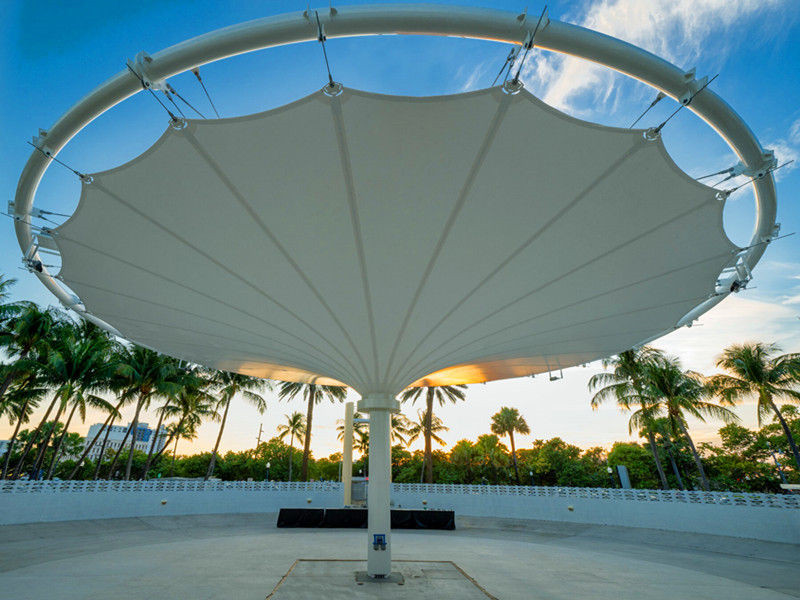
Tension structures are more cost-effective and use less material than tension fabric buildings. Tensile structures can create entire buildings, making them the first choice for complex design work. tensile fabric structures are typically made of thin fabrics that are pulled in opposite directions to create a double curvature. The double curvature doubles the stiffness of the fabric. Tensile structures can span great distances without intermediate supports.
Geodesic Dome Tents Suitable for Living and all Types of Activities
July 22,2022
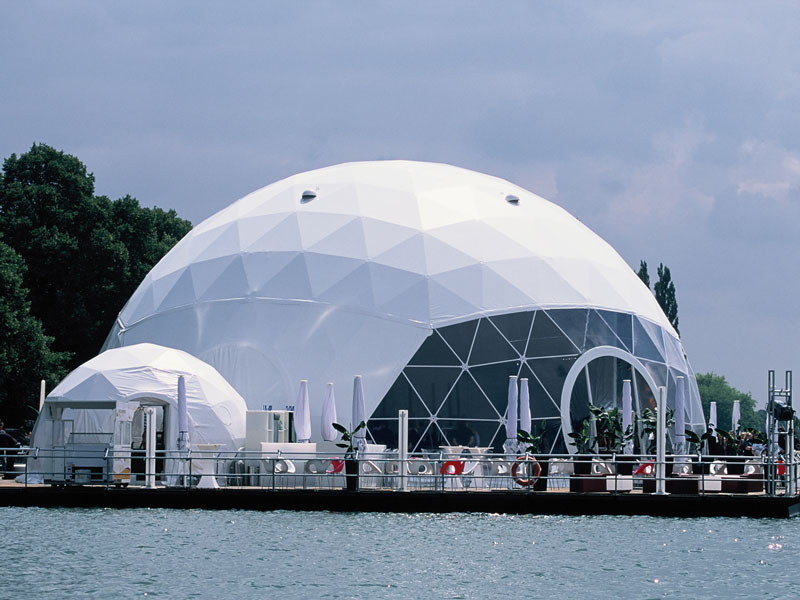
Geodesic domes have become popular venues for events. They are perfect for a variety of uses including exhibitions, wedding banquet halls, press product launches, makeshift classrooms, ice rinks, and even swimming pool tent. You can even build one yourself with the right materials and easy-to-follow instructions. If you're not sure where to start, bdir can send you engineers and project managers to help you build your own geodesic dome.
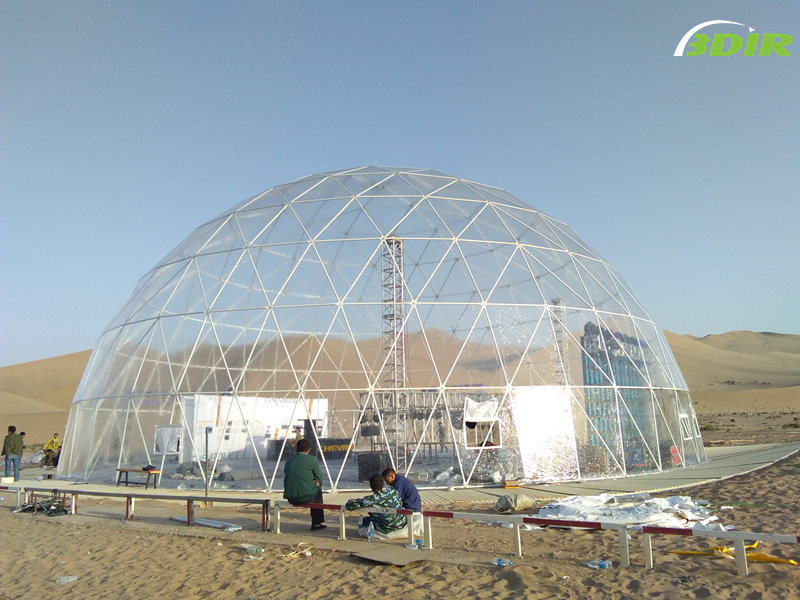
Canvas dome tents can be used with any type of tent structure. Because it has no columns or load-bearing elements, it can be set almost anywhere without building permits. It can even be installed on concrete. Due to their strength and lightweight, tall dome tents are ideal for a variety of activities. Choosing the right tent structure for your needs is critical to a successful event.
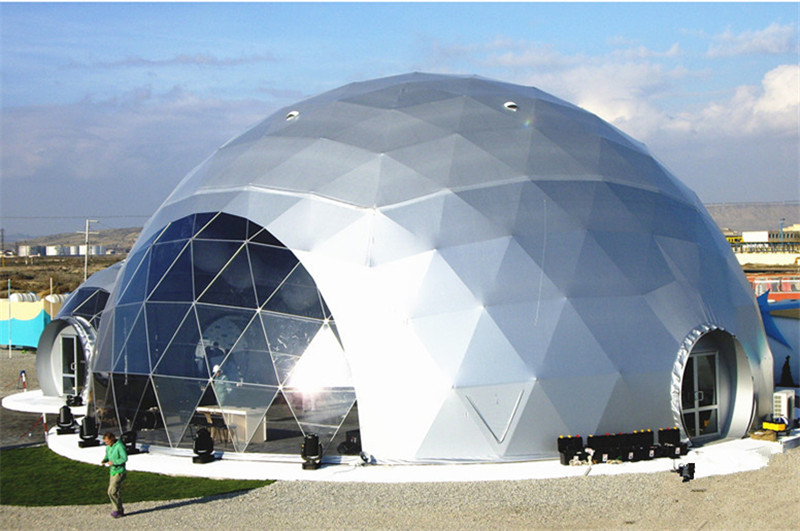
Fuller's Geodesic Dome is in the spotlight after its Italian premiere. The domes were hugely popular at the 1954 Triennial, and the U.S. military was interested in using them for future projects, especially since they needed to provide solid housing for soldiers overseas. After winning the Gran Premio at the 1954 Triennial, Fuller's design gained wider public appeal. Another important advantage of a geodesic dome is its simplicity. The design allows for innovative interior and storage options. While geodesic domes are considered a luxury, they don't cost a fortune to build. Even if you don't have the budget for a permanent structure, you can easily transport it and set it up quickly anywhere. Pop-up events are a great place to place a geodesic dome. Other uses include ballrooms, planetariums, schools, conservatories, playgrounds, and even outdoor amphitheaters.
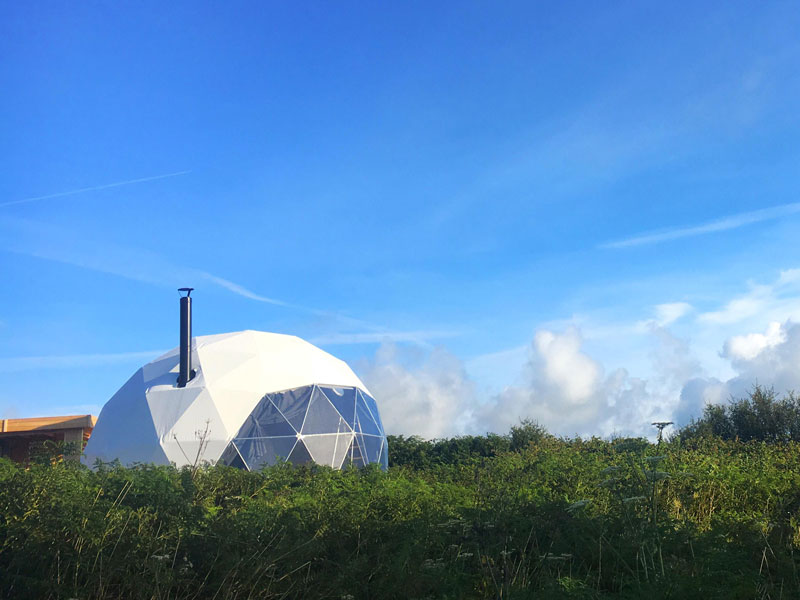
A geodesic dome is a hemispherical thin-shell structure based on a geodesic polyhedron. These are sturdy and lightweight, and they can hold a lot of weight compared to their size. The Missouri Botanical Garden used one of these to build a greenhouse in the 1960s. If you're looking for a unique country retreat, you should consider renting a dome tent. Not only are these tents durable and eco-friendly, but they are also very affordable. Plus, they can add a new dimension to your glamping experience. This unique style makes it a popular choice for every occasion, from family vacations to romantic getaways with your partner.
Luxury Glamping Tent Or Custom Glamping Tent
July 20,2022
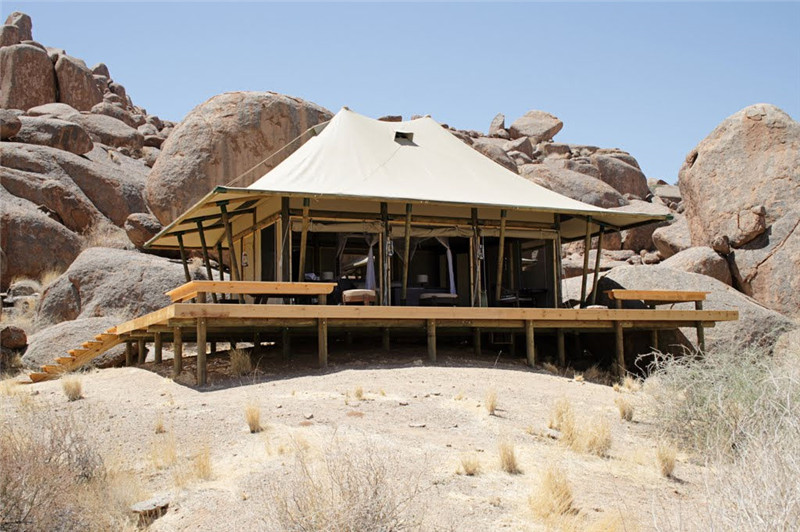
There are many reasons to choose a glamping tent or a custom camping tent. One of the most popular ways is to escape the hustle and bustle of everyday life. Glamping is a great way to enjoy nature and fresh air. There is no better way than using a glamping tent.
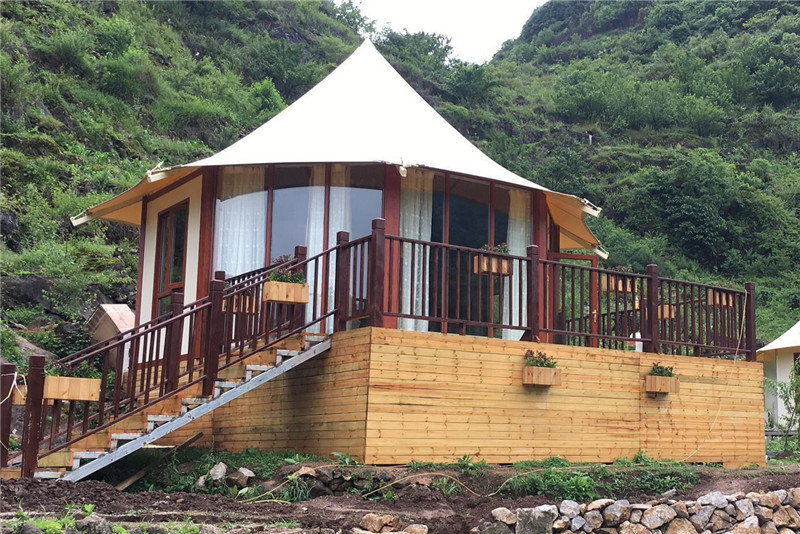
Customized luxury tents can be used for any destination, whether it's the ocean, mountains, deserts or beautiful lakes. Whether you're looking for privacy or complete seclusion, luxury tents have it for you. Choose from a variety of floor plans and customizations to create the perfect space for you and your family.Luxury camping tents can be as simple or as sophisticated as you like. Many models have open floors and roll-up sides for excellent airflow. You need an accomplice to set up this tent. Then, you'll need a stove jack, insulating lining, and some special fabric to resist fire. Additionally, you can customize the interior of the tent with furniture and appliances as well as panoramic windows.
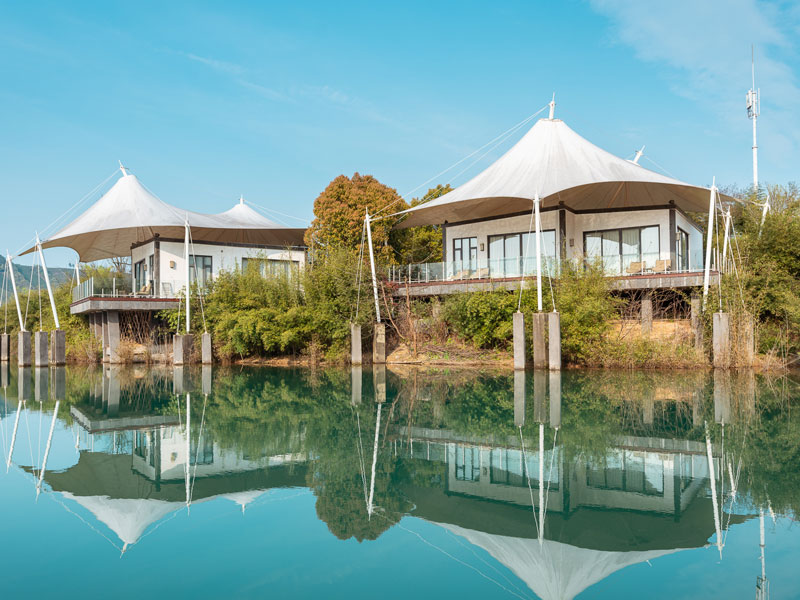
Glamping tents have become as versatile as canvas fabrics and can be used in upscale resorts around the world. They are also a great way to provide eco-friendly accommodation in remote safari areas. The flexible design of these tents enables architects to design environmentally sensitive resorts and campgrounds. If you are interested in purchasing a glamping tent, please contact the supplier or designer for a free quote. Prices vary based on the size and complexity of your needs.
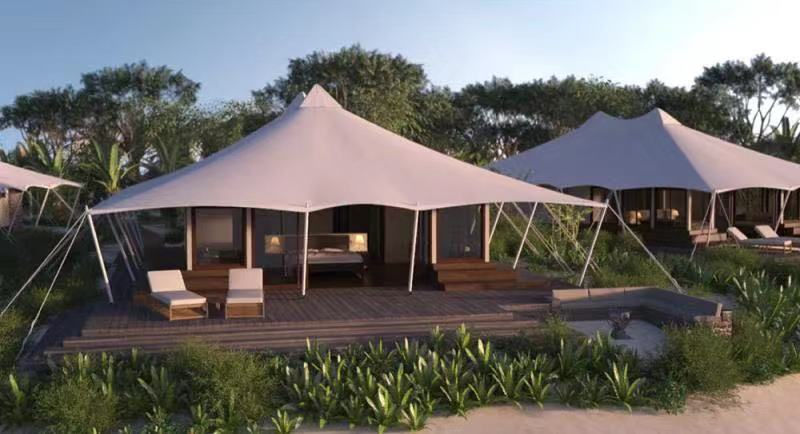
The luxury tent is made of heavy duty cotton canvas, which is waterproof and fireproof. The floor is made of PVC and can be used to install a wood burning stove. The canopy is also equipped with two mesh windows for better ventilation and airflow. The luxury tent also comes with two roof vents and plenty of tie-down points on the outside. You can also make glass tents out of glass. There is no single choice.Glamping tents are an elegant choice for outdoor enthusiasts. The double-wall construction is robust and durable. The vestibule can be removed for a better view. It's also easier to set up than a heavy canvas glamping tent. They have a small footprint and are less likely to be blown over in windy weather. The Glamping Tent is a great choice for families or couples looking for a glamping tent. They are also suitable for various occasions such as events, party gazebo tents. Also consider renting a gazebo tent if the funds are out of budget.If you want a luxury camping tent, you need to consider size. Both safari and luxury tents have minimum size recommendations. Since glamping tents feature beds rather than cribs, size requirements for glamping tents depend on occupancy.
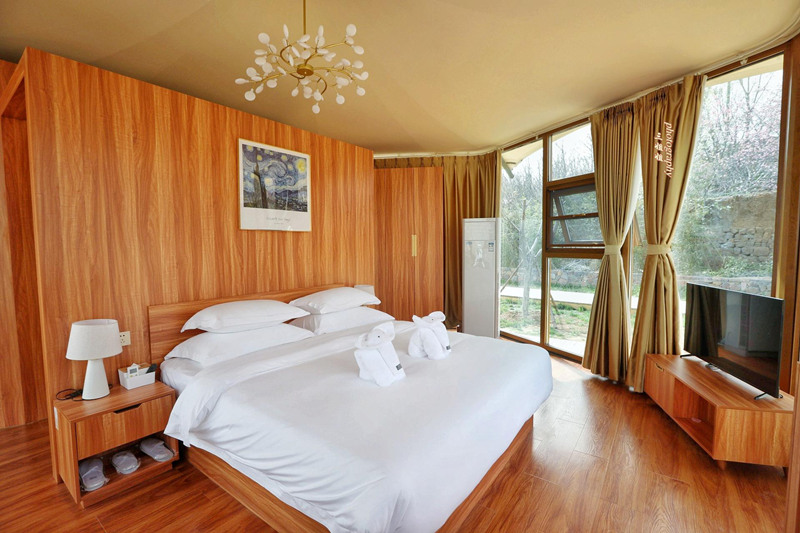
Glamping tents can be up to 16 feet in diameter and sleep up to four people. A typical luxury tent can accommodate a single bed or two single beds. These are also very easy to transport and turnkey, making them the perfect solution for any outdoor experience. They're perfect for adventurous campers who want to camp without breaking the bank.
Advantages of a Custom Dome Tent
July 18,2022
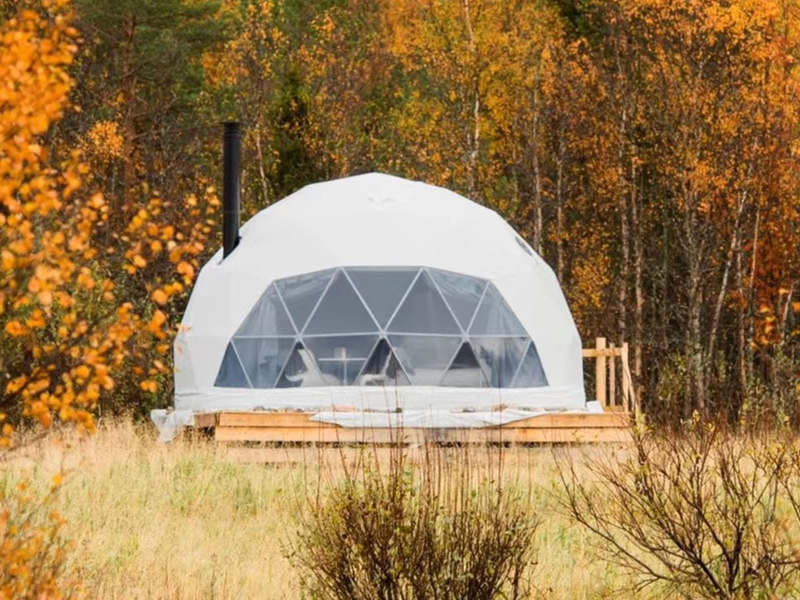
There are many advantages to custom glamping tents or custom camping units. building a geodesic dome home and you'll be able to relax in a luxurious tent with secluded landscapes and breathtaking views. You can even enjoy a spa treatment at the on-site spa. Plus, your luxury tent will be completely pest-proof. It is also waterproof, UV resistant and flame retardant. What's more, it's very easy to install. Since it's a tentacle product, you can be sure that it's not only bug-free, it's waterproof, flame-retardant, and has an anti-fungal treatment for long-lasting protection.
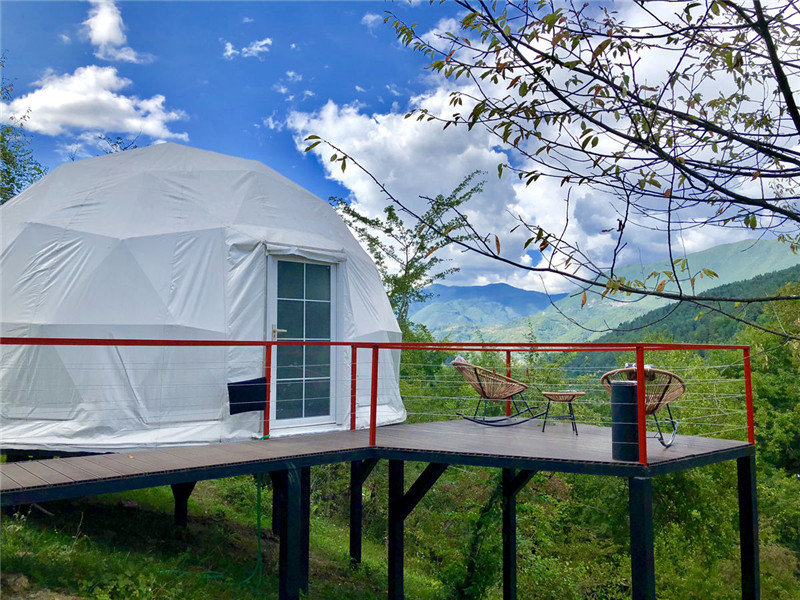
Large dome tents is made of heavy duty cotton canvas. It is waterproof and fireproof. The tent also comes with heavy PVC tub mats to insulate heat and keep bugs out. The model also features two mesh windows, a top vent, an oversized zippered front door and lots of exterior tie-downs. The tent is spacious inside and the exterior includes a floor, with plenty of space for sleeping and practicing yoga.
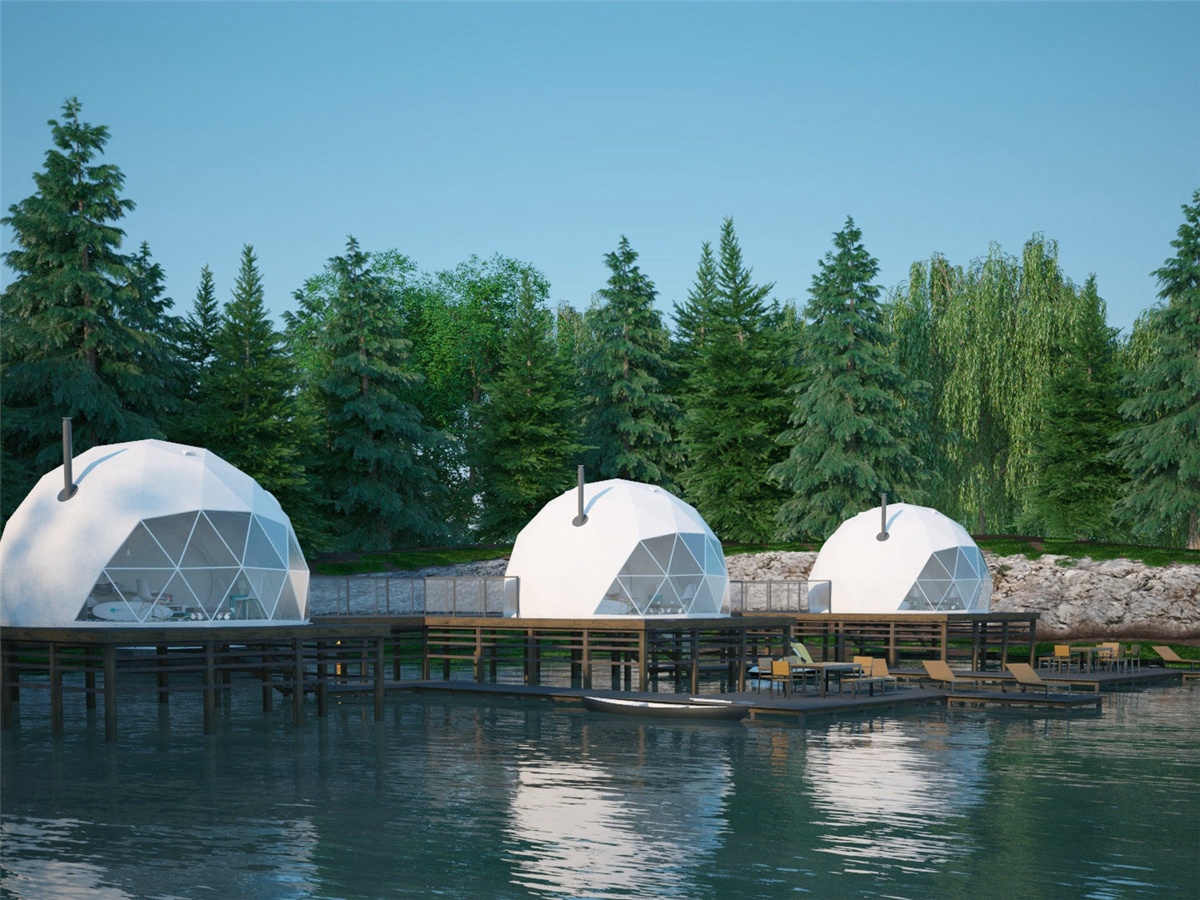
Glamping is ideal if you want to experience the best of nature. With a custom geodesic dome, you can escape the hustle and bustle of everyday life and reconnect with nature. Whether you want to go hiking, scuba diving, or just relax in the fresh air, the geodome home provides the perfect retreat. You will never forget the feeling of experiencing the beauty of nature.
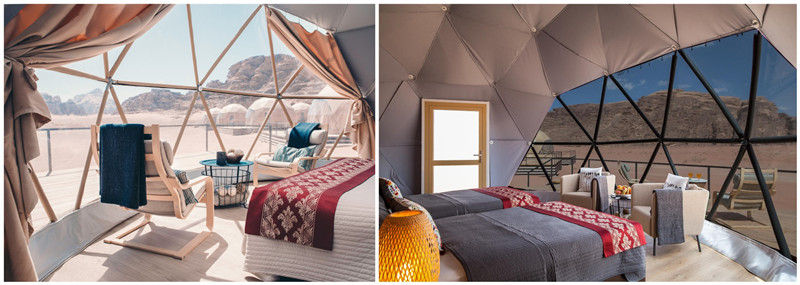
Geodesic domes definition luxury canvas tents are ideal for base camps, guest suites and glamping resorts. Luxury canvas tents are available with double ceilings and built-in chimney ports for any weather. You can also enjoy the internal heating system with the highest quality YKK zippers. This luxury canvas tent can accommodate three people and is the perfect home away from home.
What is Tension Structure & What are its Benefits
July 13,2022
.jpg)
The basic concept behind tensile structures is the use of fabrics to create strong structural systems. These structures can be reinforced with high-strength cables at a much lower cost than traditional steel or concrete structures. While some fabric structures rely on mechanical devices to keep their structures in place, their reliance on these devices can lead to troubling deflation and other problems. The increasing acceptance of fabric structures makes tensile fabric structures a less controversial structural system.
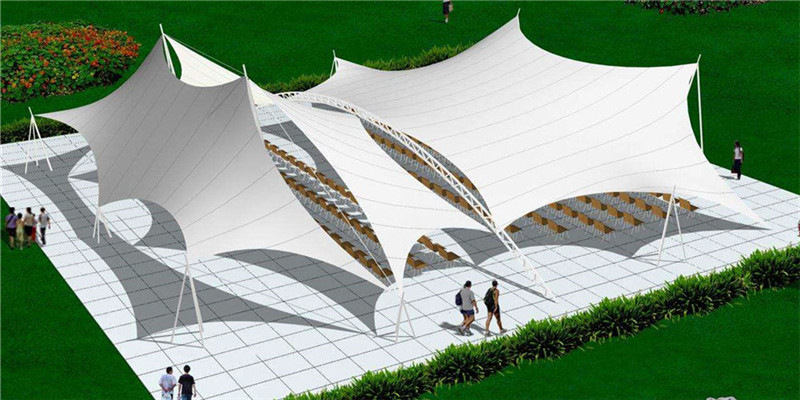
While tensile architecture is better known today, its roots can be traced back to the Ice Age. The Siberian steppe is home to primitive human settlements made of animal skins draped between wooden sticks. This may be the first tensile structure because it is lightweight and easy to transport. Eventually, humans will develop ways to replicate these structures using more efficient and sustainable materials. Today, the process is widely used in large buildings. Tensile buildings can be used as general storage or waste management facilities. However, tensile buildings cannot be designed to include windows or support a solid roof. However, this does not limit design options. Instead, the steel frame of the structure can be adjusted to create dramatic shapes. Fabric can also be manipulated for interesting visual effects. This allows for a wider variety of applications than conventional construction.
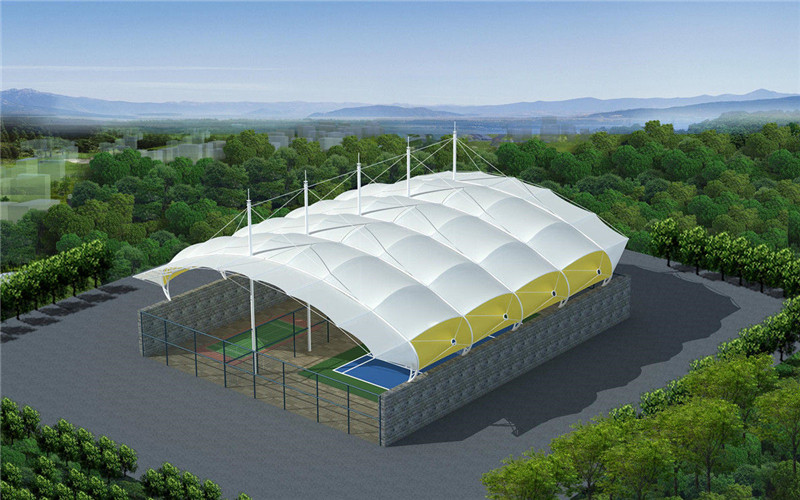
Another name for tension structures is tension fabric structures. retractable pergola shade cloth Tension fabric buildings are lightweight structure, easy to install, and can span great distances without the need for internal columns or poles. Tension fabric buildings typically include a steel frame for structural support, and the fabric acts as a protective covering that lets in natural light and protects from the elements. While this construction has the advantage of being able to span great distances, the fabric has little room for folds and is still durable. Now many scenic spots will have buildings that can also be used as permanent gazebo structures. The style is changeable and it is also an iconic building. In addition to being aesthetically pleasing, stretch fabric construction is also a very economical option. Tensile structures are easier to build and less expensive to maintain than traditional steel or concrete structures. Tensile fabric structures can be used in many different applications, from existing buildings to freestanding structures. Its unique geometry makes it one of the most versatile and affordable structures on the market.
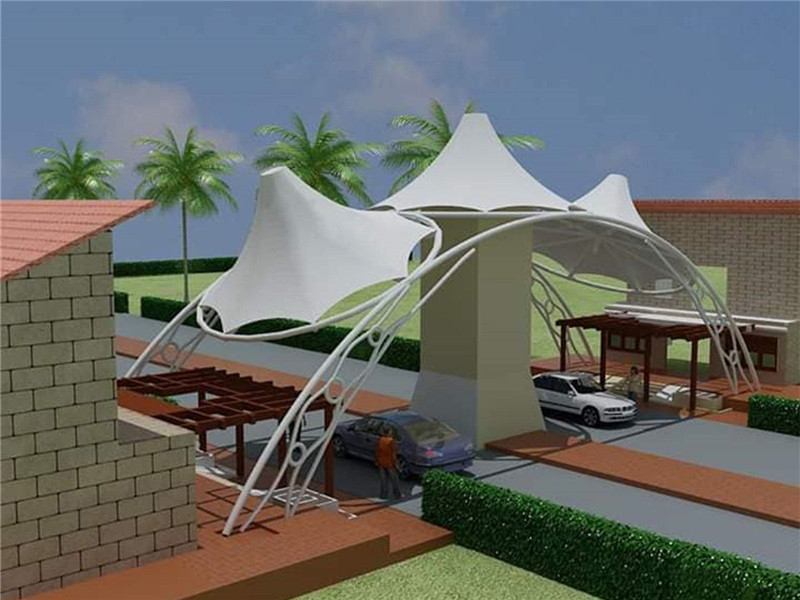
Another benefit of the types of tensile structure is that it is highly reflective. It provides more efficient lighting at night and significantly reduces demands on the HVAC system. Additionally, the highly reflective surface of the stretch fabric makes it ideal for shading façades and ceiling planes. The benefits of this structure are countless. You can use it as a facade for buildings, parking lots or sports fields.The basic components of a stretch fabric construction are the saddle and the cone. These are asymmetrical forms that can be combined to meet specific needs. By combining these two components, the tension structure can achieve any desired shape. This type of structure is called prestressing and can be used in a variety of applications. If you are looking for a simple yet versatile tensile structure, a bulletproof saddle will serve you well.
How to Choose or Customize Tent For Glamping
July 11,2022
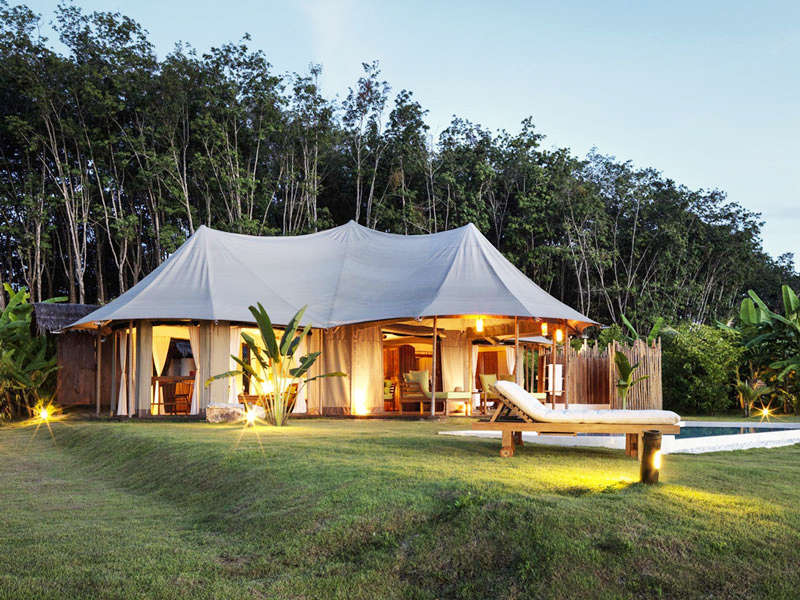
If you're planning a trip to the countryside, you might want to consider renting a luxury or custom glamping tent. These unique accommodations take you away from everyday life and allow you to enjoy nature, fresh air and total relaxation. Custom tents offer the perfect combination of luxury and functionality. Here are some tips for choosing a resort tent or custom luxury tent.
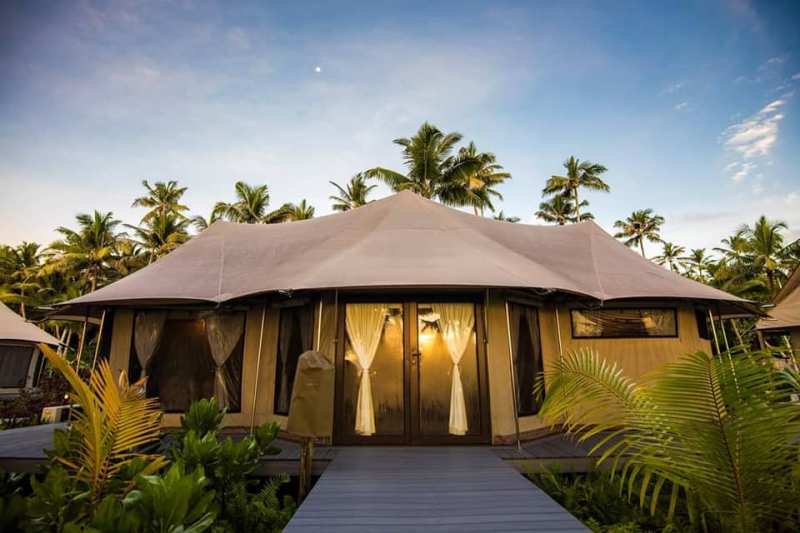
Luxury canvas tents are available for base camps, guest suites or glamping resorts. Some tents include a built-in fireplace and chimney port. Although rugged, this type of tent is perfect for all four seasons, including winter. It has plenty of room for a king-size air mattress, coffee table and storage for other gear. The interior of the luxury canvas tent features YKK zippers for unmatched durability and ease of use. Furthermore, it can be divided into three separate rooms.
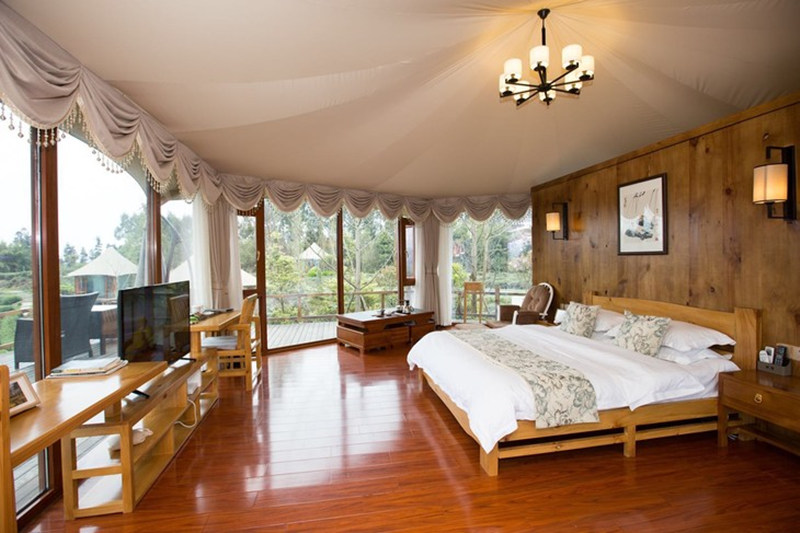
Large camping tents offer the ultimate in comfort and style. Their design features include front balconies, custom doors and windows, insulated walls and optimal airflow. The interior space varies from 16 to 85 square meters. They are also eco-friendly and have a long-lasting anti-fungal treatment. Whether you're looking for an intimate getaway with friends or a romantic getaway, temporary tent structures can provide you with the perfect shelter for an unforgettable stay. A quality glamping tent should be equipped with four seasons, including rain, snow and wind. Its design should also include features that prevent the interior from feeling too hot or too cold. Canvas fabrics should also be waterproof and durable. Additionally, doors and windows should be adequate and vents should be strategically located to allow the tent to breathe properly. When shopping for a glamping tent, there are many features and styles to choose from.
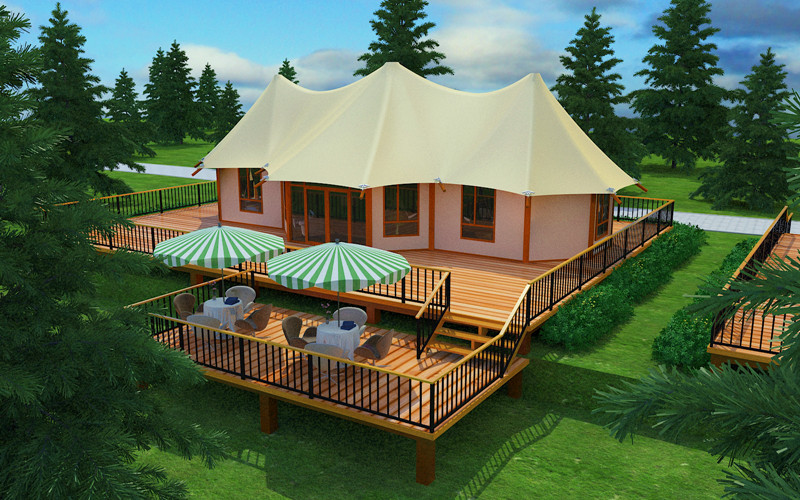
Luxury safari tents combine style and utility. Plus, they're easy to transport and set up. The tents are designed in such a way that they do not interfere with nature. Luxury and Glamping Tents offers luxury safari tents for sale and ships them around the world. With a few tricks, you can create the ultimate luxury safari tent in no time.
Why are Geodesic Dome Tents so Popular?
July 07,2022
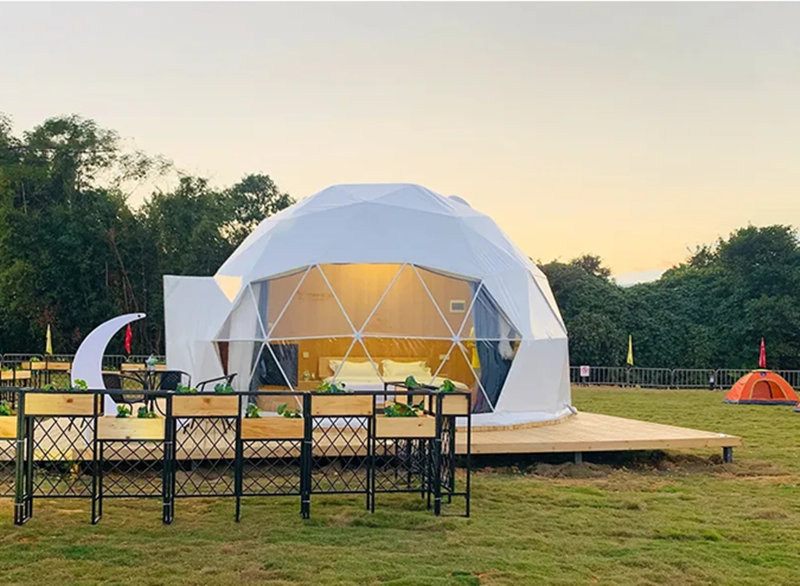
The dome tent structure is one of the most popular designs for tent areas. It is made of high strength steel and pvc coating, it is lightweight and durable. Its frame is strong enough to withstand up to 20 years of use. Also, it can be disassembled and folded for easy transportation and storage. Furthermore, it can be installed on asphalt, concrete or sand.
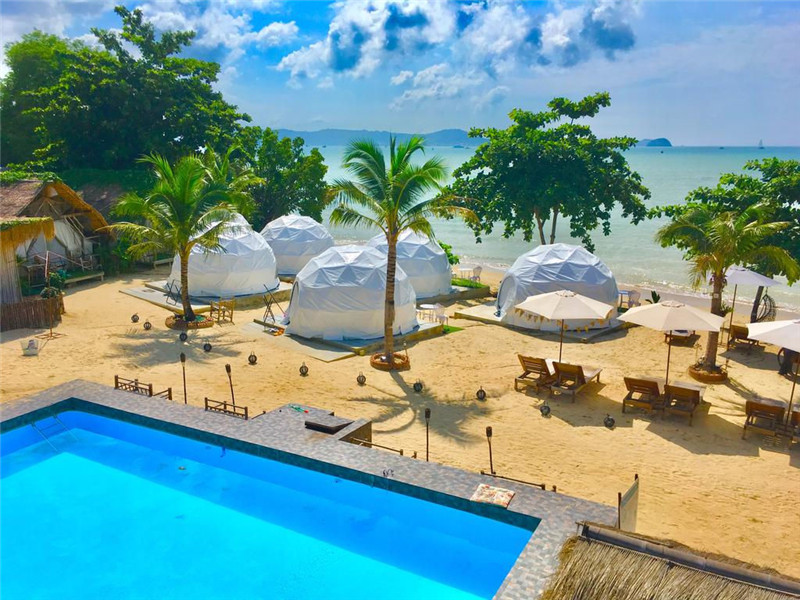
Geodesic dome tent structures are an excellent choice for glamping. Despite their practicality, it is difficult to install windows into a geodesic dome structure. Fortunately, geodesic dome manufacturers offer dome kits with detailed instructions. Domes can be assembled by one person, while others can take up to six months. The length of time required to assemble one will depend on the design of the dome. They are essentially spheres with the least surface area surrounding the largest interior space. Doubling the diameter of a sphere quadruples its volume and square footage. The spherical shape of the dome also allows air and energy to circulate, creating a natural climate. Many geodesic shelters have been built and tested in a variety of climates around the world and have proven to be the most energy efficient shelters ever used by humans.
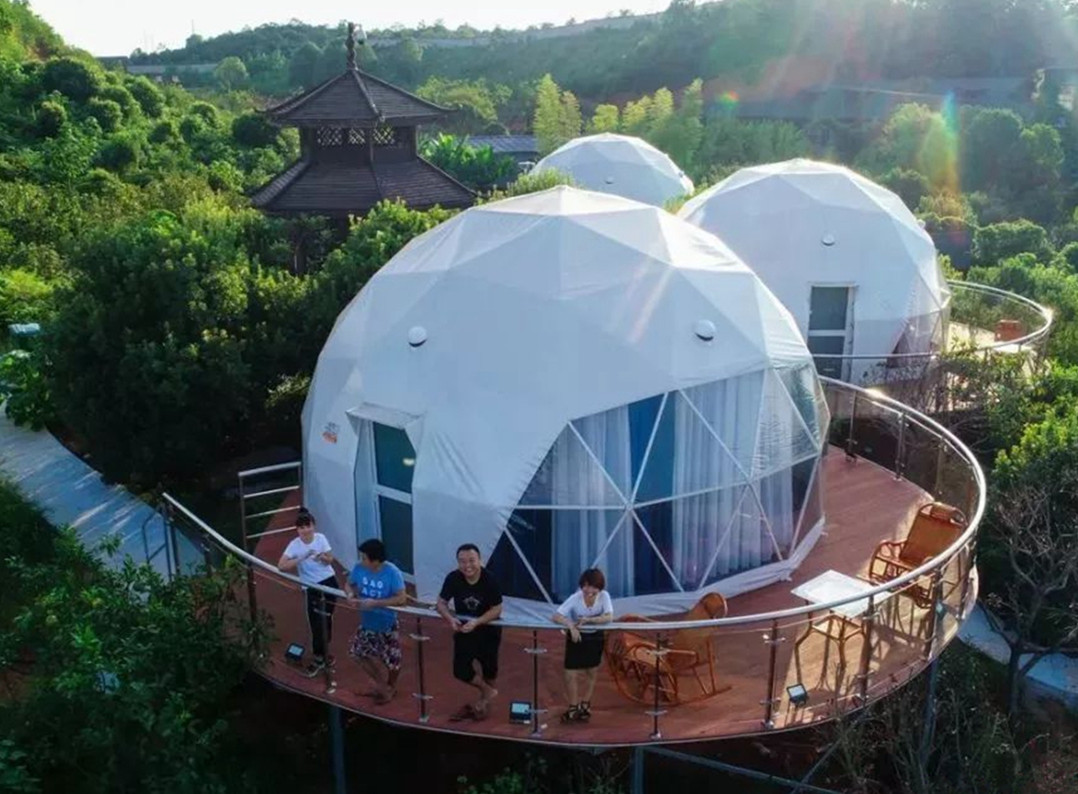
The geodesic dome building was less successful than the commercial version. Residential domes are generally more complex and more expensive to build. It is advisable to hire a professional contractor when building the dome, as this will eliminate the risk of costly overruns. Fuller lives in a geodesic dome near Carbondale, Illinois, and sees potential for a similar space industry. While geodesic domes have a variety of applications, the overall design is suitable for many applications. Like all other geodesic structures, the geodesic dome is very strong and ideal for extreme weather conditions. In addition to energy saving, geodesic dome shelters are also better for the environment. Ultimately, you can enjoy your new home without worrying about the expense and safety of your family. also available Geodesic dome for rent
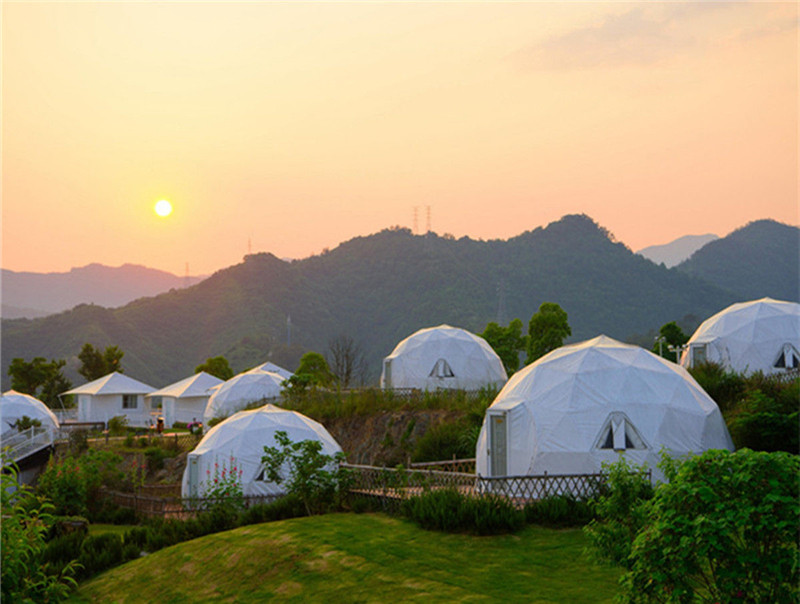
Due to its portability, the geodesic dome structure is ideal for outdoor activities. It can be easily transported from one place to another and can be installed almost anywhere. This makes it a popular choice for pop-up events, planetariums, dance halls, schools, conservatories and even outdoor amphitheaters. In addition to its many uses, the geodesic dome structure is a great way to create temporary space.
What are the Advantages of Tensile Fabric Structures Over Traditional Buildings?
July 05,2022
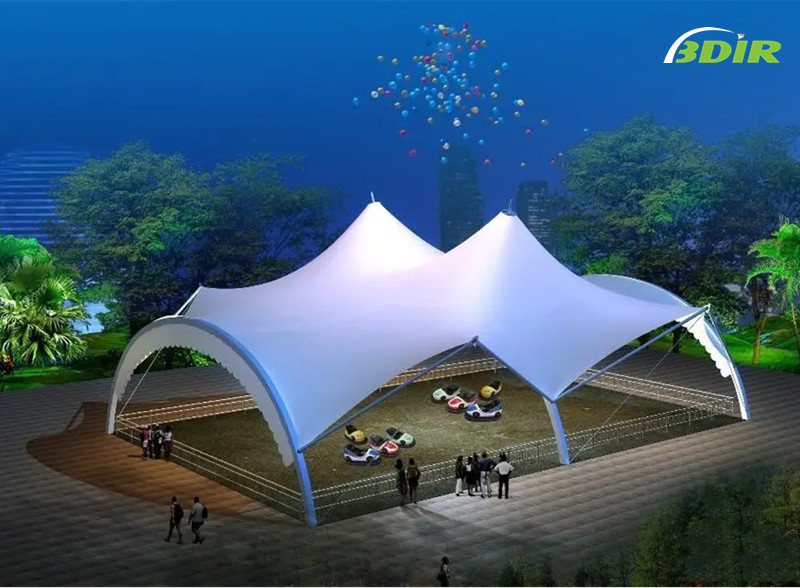
A tension fabric structure is a building that uses fabric as a structure to support weight. Often called tensile façades, these structures can be used to cover the exterior of buildings, car parks or sports fields. The stretch construction is also great for incorporating brand messages into fabric graphics. Here's a closer look at the benefits of stretch fabric construction.

tension fabric structures uses two basic building blocks: saddle and cone. Both shapes are very versatile and can be used to create structures that suit your requirements. The saddle can be thought of as a twisted grid of rectangles, while the cone is more like a volcano. Two types of fabric tension structures can be stacked to create efficient designs. What's more, the stretch fabric construction can last 45 years!

Frei Otto was an early pioneer of tensile construction. Frei Otto discovered that many natural forms have perfect tension and developed a method to connect them. He later developed a model with soap. The process of developing this architectural model has led to numerous innovations in tensile architecture. In the years that followed, more and more architects and designers began to incorporate tensile structures into their work.
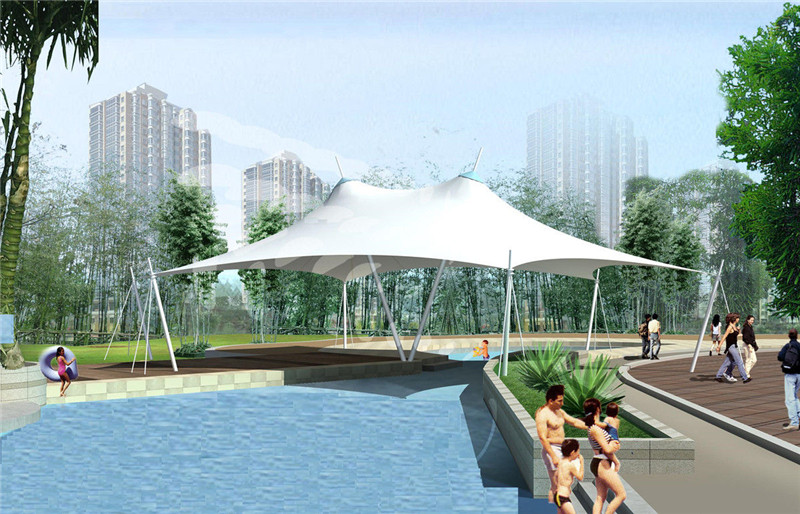
Tensile structures are a good alternative to traditional buildings. As the name suggests, they consist of a metal frame and fabric shell. Compared to traditional buildings, tensile structures use less material and are more environmentally friendly. Steel is an excellent skeleton material and requires less material for the structure than conventional construction. In 2014, a steel framed tensile building was able to withstand 130 mph winds!
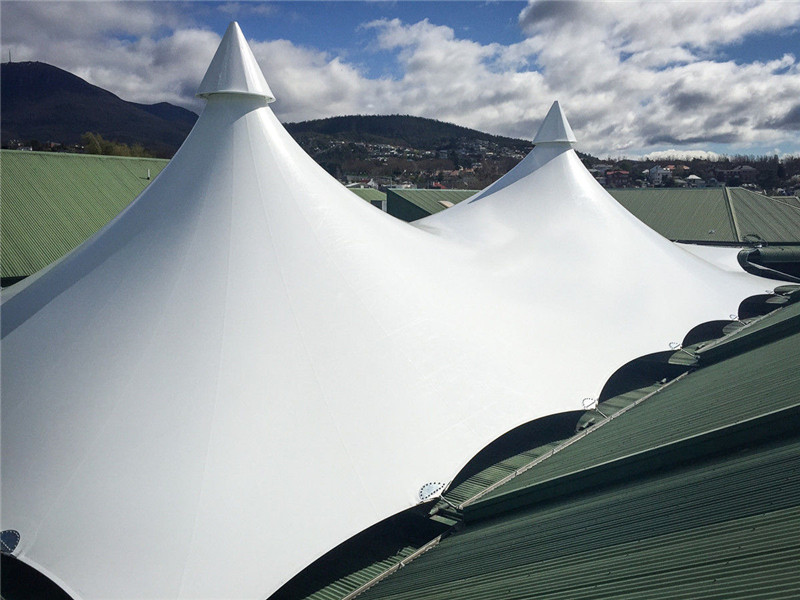
The earliest tensile structures were used for portable outer shelters, such as tents, shelters. Since then, they have continued to evolve as different people used different materials, climates and architectural styles. Bedouins and Berbers use black tents, while Moors and Kurds use tent-like structures for shelter. So what are the advantages of tensioned structures over traditional buildings?
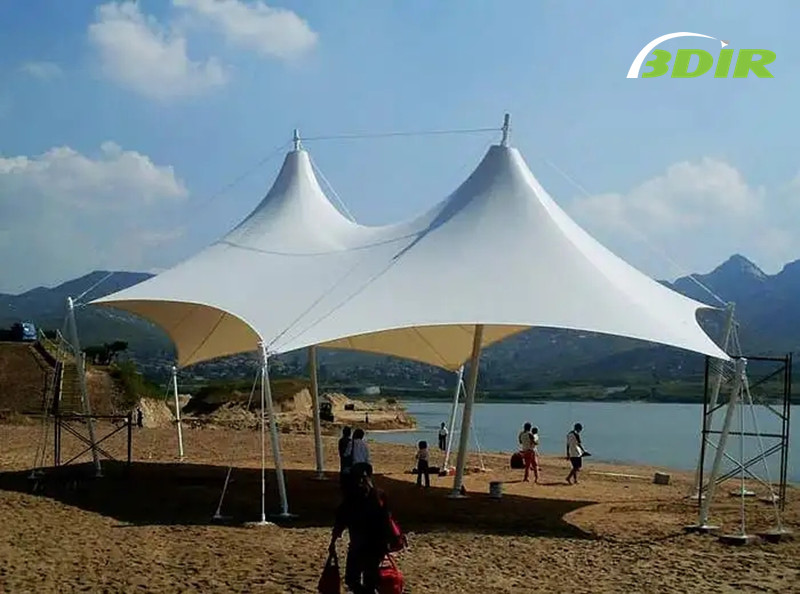
The tension fabric structure has a highly reflective surface for better lighting even during the day. This results in a significant reduction in the energy required for lighting and HVAC systems. This means lower utility bills for homeowners. The highly reflective surface of the tensile structure is a great advantage for energy efficient buildings! This makes it perfect for buildings and parks. If you plan to place tensile structures on your property, consider the following benefits:
Tensile structures use less material than tensile fabric buildings, and it can be used to construct entire buildings. It is easier to install and requires fewer internal struts than tension fabric construction. Tension fabric buildings typically use a steel frame as structural support and fabric as a protective layer to keep out the elements. You get all the benefits of tension structures without the high cost of interior construction.
How to Find a Camping Tents That Fits Your Style?
June 29,2022
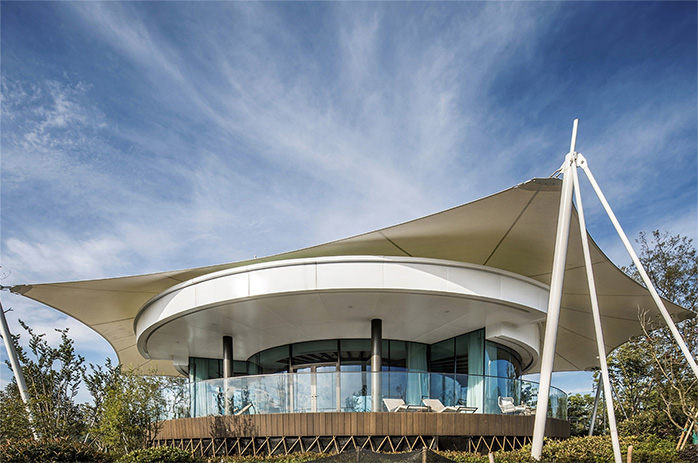
If you're looking for a camping tent that will make you truly memorable, consider a custom luxury glamping tent. These tents offer complete customization from exterior to interior. They are fully customizable to suit any personal taste, from those who prefer rustic to luxurious. Whether you want a luxury tent with all the bells and whistles or something in between, there is one for you!
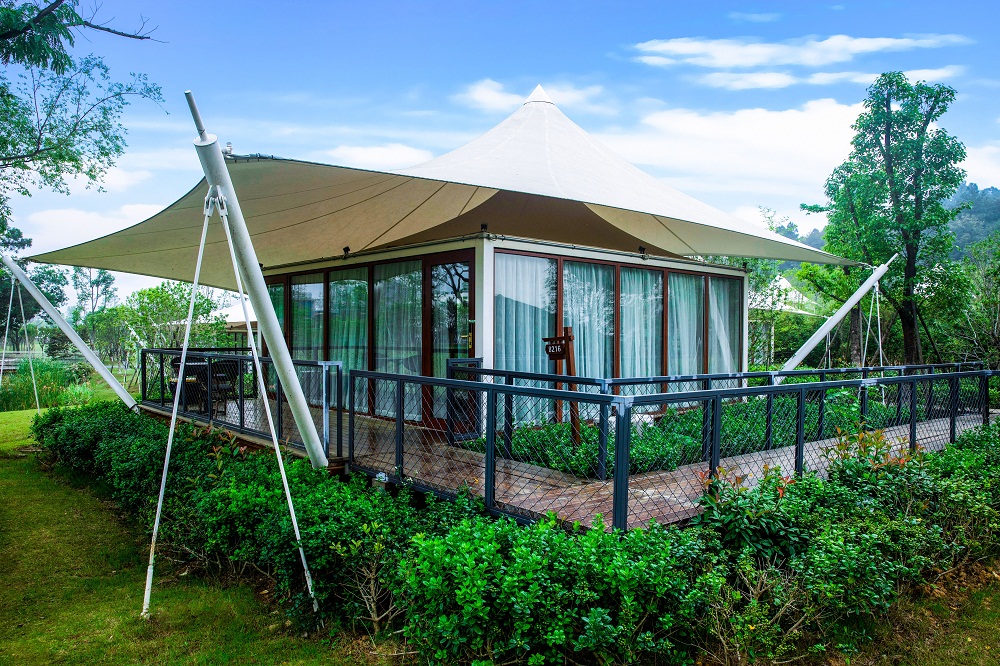
One of the most popular aspects of glamping is that it offers an opportunity to break away from everyday life and reconnect with nature. Temporary tents structure are an unforgettable experience and a way to fresh air while remaining comfortable and stylish. The only compromise you have to make is budget. Custom glamping tents can accommodate up to four people at a time, so you can choose what you need.
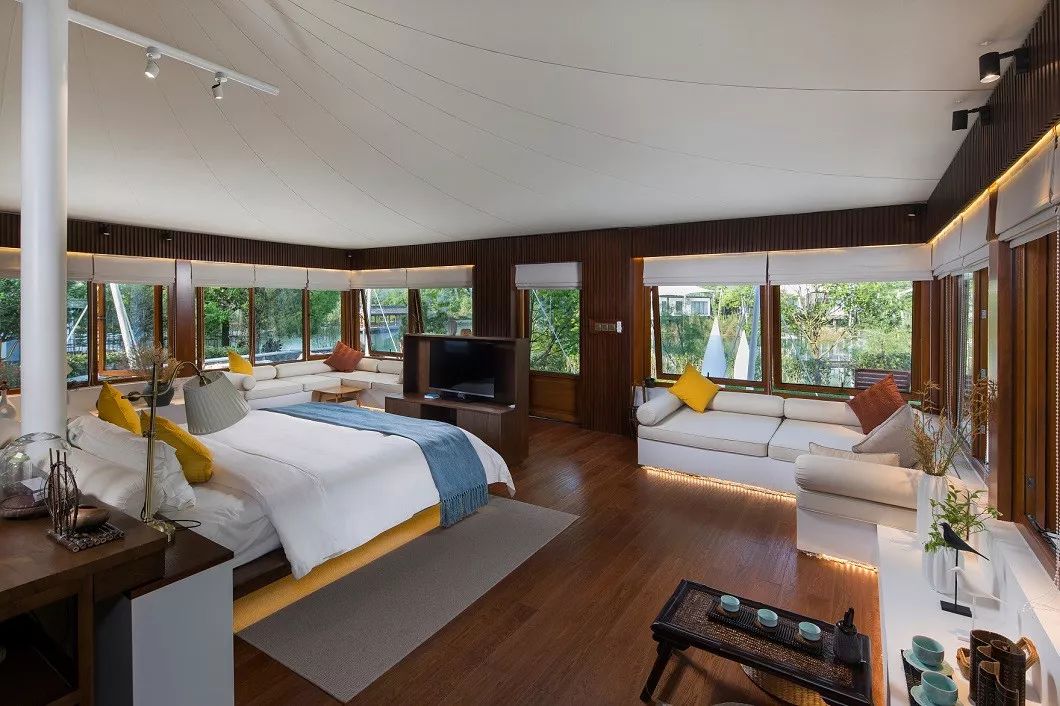
The range of camping tents offers a selection of standard models and a range of accessories. A great choice for family camping trips. They have a lot of space, we can also call them large cabin tents. The tent's peak height makes it one of the most storm-resistant stand-up tents. Plus it has sturdy aluminum poles and adjustable cords and a waterproof floor.
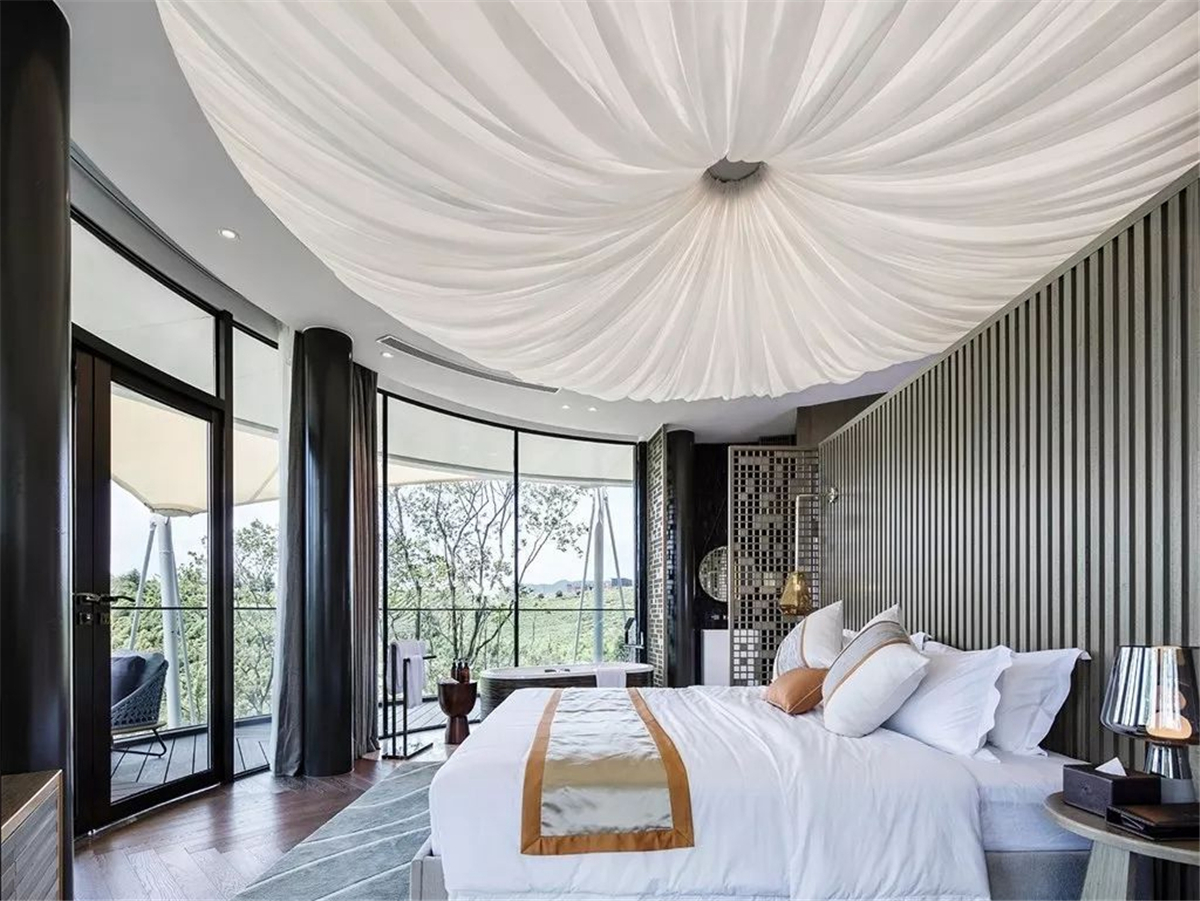
Custom glamping tents can withstand four different seasons. The canvas of a quality camping tent will be able to withstand all four seasons, including snow and rain. The tent's all-weather design goes beyond the base material. It also includes the shape of a tent that can keep out the weather. It should also have plenty of doors and windows and well-placed vents to keep airborne debris out.
.jpg)
If you are looking for a strong luxury tent that provides maximum comfort and functionality, look no further than the Luxury and Glamping tent series. These tents can be shipped anywhere in the world. Whatever your needs, you can find a luxury tent that fits your unique style. So, check it out! You'll be glad you did!
Archives
News at BDiR

How to Customize Your Own Glamping Tent
July 29,2022

Tensile Structure Uses and Advantages
July 27,2022

Geodesic Dome Tents Suitable for Living and all Types of Activities
July 22,2022
Watch Our Videos
Luxury Eco Friendly Tent Structures Lodges for Tea Garden Holiday Hotel
Luxury Sustainable Hospitality Eco Tent Structure Villas

